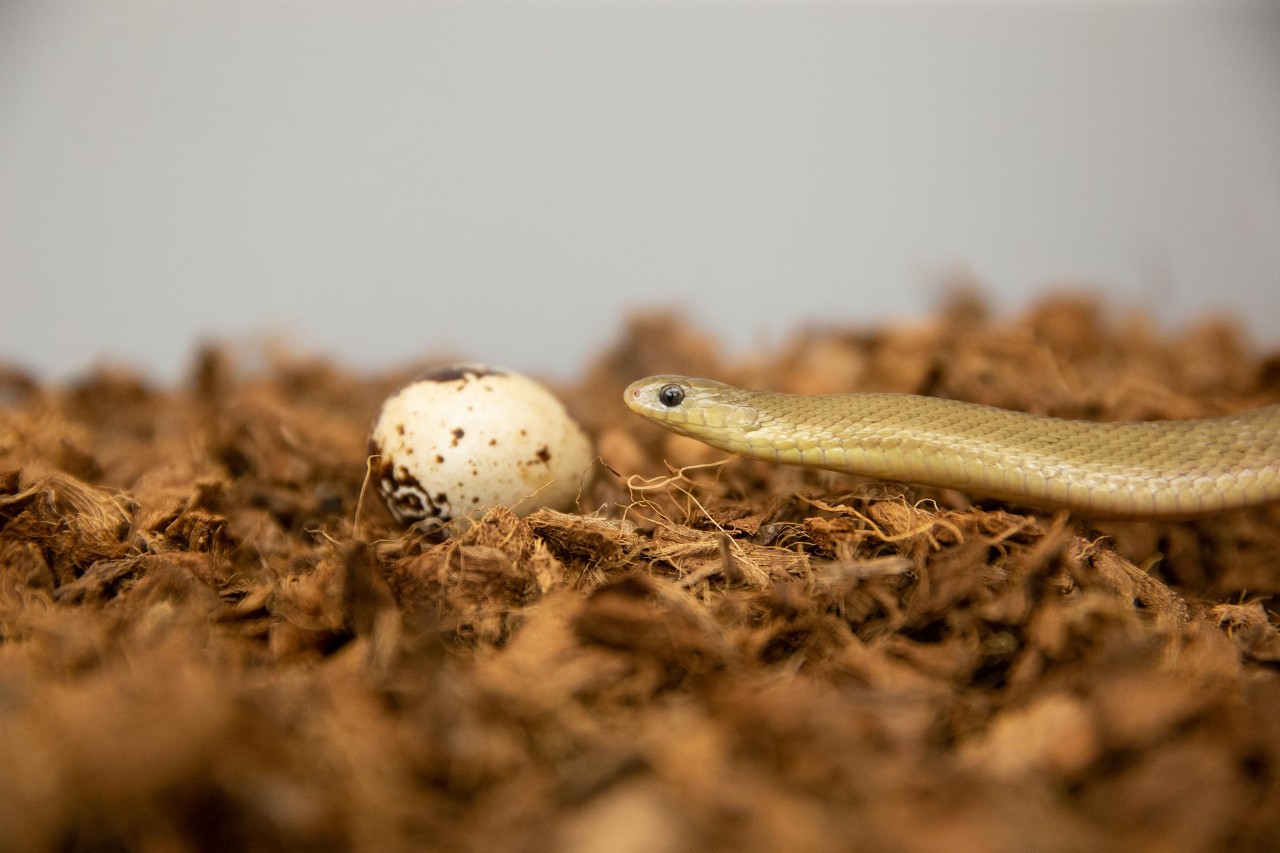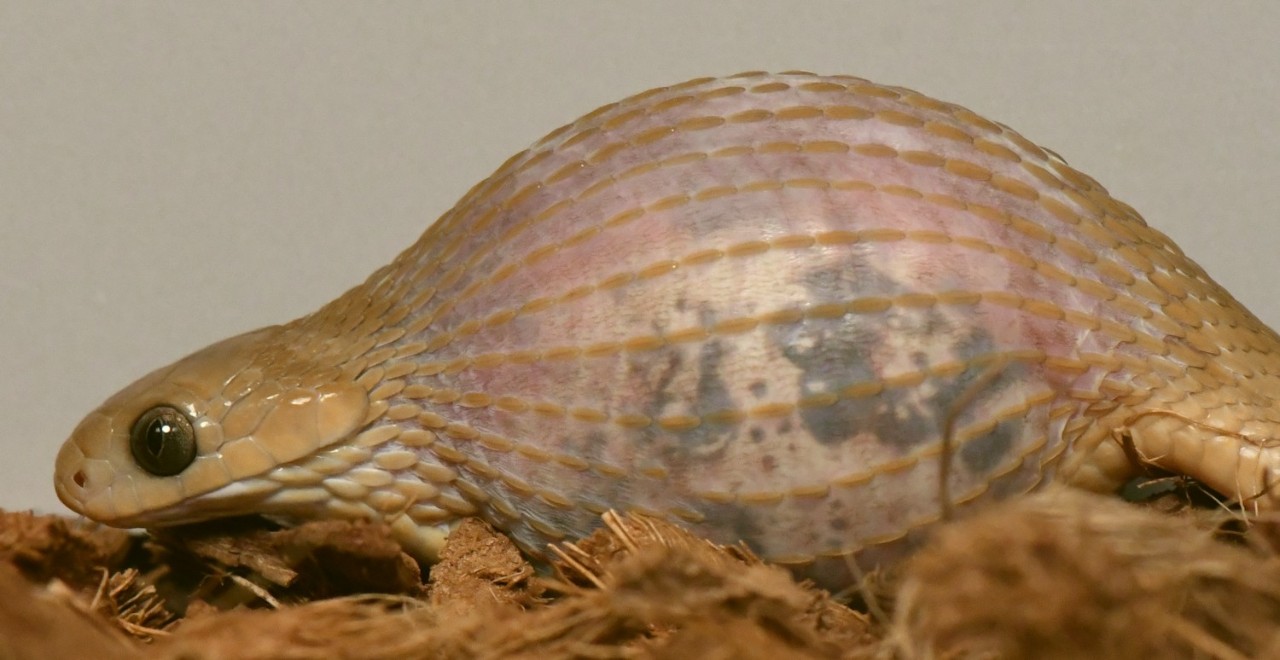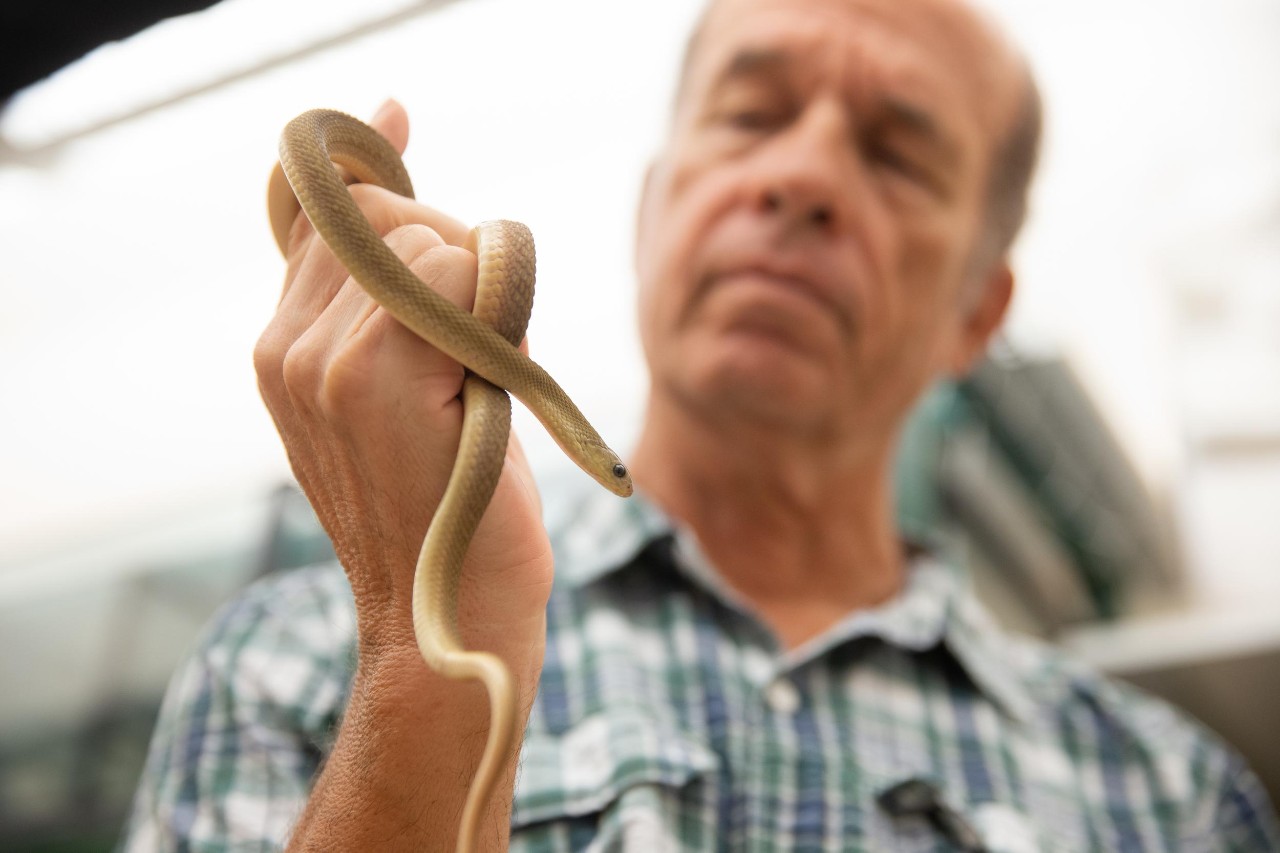
The New York Times: This tiny snake has a big mouth
UC biologist discovers surprising distinction for harmless little African snake
The New York Times highlighted a discovery by a University of Cincinnati biologist that a harmless little African snake can eat the biggest prey relative to its size of any known snake.
UC Professor Bruce Jayne has spent years studying the extreme limits of snake abilities in his lab in UC's College of Arts and Sciences. His work has revealed surprising ways that snakes move and the incredible ways they hunt and swallow prey without benefit of hands, paws or claws.
His latest discovery revealed that the champion eater among snakes appears to be a drab little nonvenomous species, Dasypeltis gansi, or the Gans' egg-eater. True to its name, the snake swallows eggs whole before cracking them with its spine and spitting out the broken shell.

The Gans' egg-eater swallows a quail egg far larger than its head. The snake has the largest mouth relative to its size of any known snake, according to a new study by UC biologist Bruce Jayne. Photo/Bruce Jayne
While Burmese pythons can consume deer and 100-pound alligators, these meals still don't measure up to those consumed by the little egg-eater relative to either its length or mass.
Jayne presented his findings in the Journal of Zoology.
“This particular group of snakes may be No. 1 when it comes to big mouths in the snake kingdom,” Jayne told the Times.
Associate Professor Bryan Maritz at the University of the Western Cape in South Africa was not part of the study but has been conducting similar research on snake abilities, particularly “how the hell does a tiny, tiny snake like this swallow a bird egg?”
Maritz told the Times that Jayne's study stands out because it upends traditional thinking when it comes to estimating the size of prey a snake can swallow.
“We’ve always just relied on proxies for snake gape,” Maritz told the Times. “We’ve said, ‘Well, gape is correlated broadly with head length, and so you can measure a snake’s head length and you can estimate its gape.’ And this study really shows that that’s not the case.”
Read the New York Times story.
Featured image at top: A quail egg is just a snack for a Gans' egg-eater in a UC biology lab. Photo/Andrew Higley/UC Marketing + Brand

UC Professor Bruce Jayne holds a Gans' egg-eater in his biology lab. Jayne discovered that this unassuming little snake holds the distinction of having the biggest mouth for its size of any known snake. Photo/Andrew Higley/UC Marketing + Brand
Related Stories
Wired: Is psychedelic therapy bubble about to burst?
September 9, 2022
UC postdoctoral researcher Nese Devenot talks to Wired magazine about challenges facing psychedelic therapies.
Psychedelic research renaissance
August 16, 2022
Psychedelics such as LSD, psilocybin and MDMA are gaining increasing attention in scientific and medical circles because of the potential they hold for treating anxiety disorders and emotional trauma. UC's Nese Devenot explains why psychedelics are seeing a research renaissance.
NatGeo: UC discoveries featured in new series on ancient Maya
March 25, 2024
UC's research on the ancient Maya in Tikal is featured in a new National Geographic series called "The Rise and Fall of the Maya."
